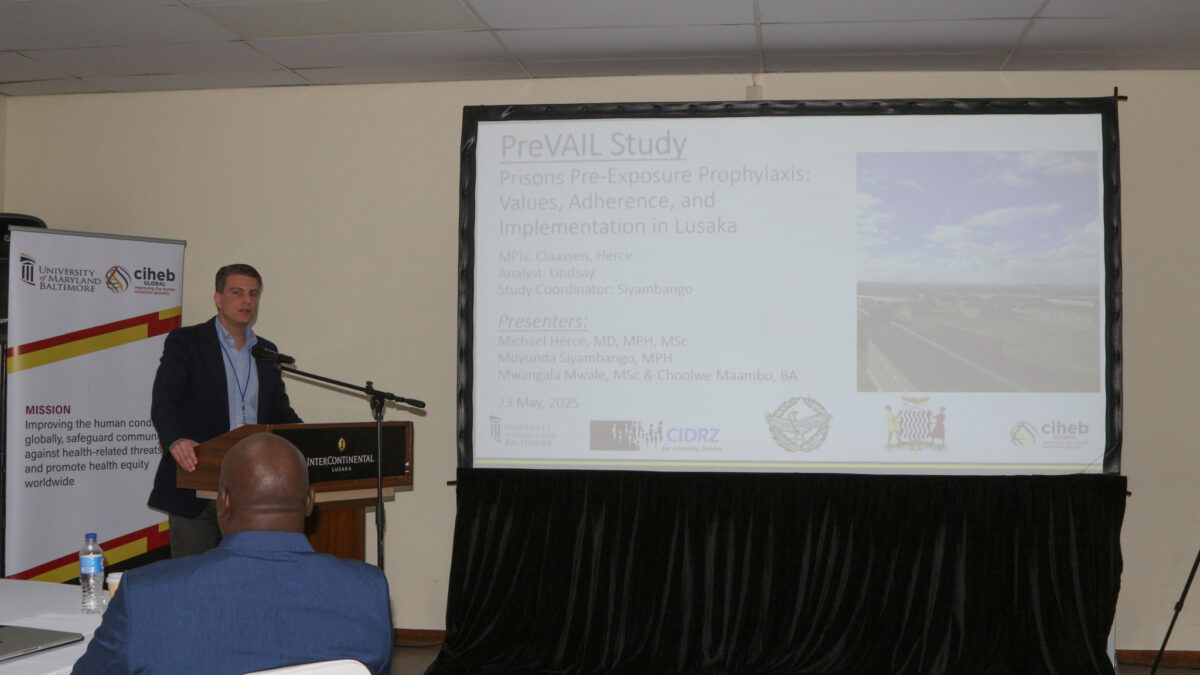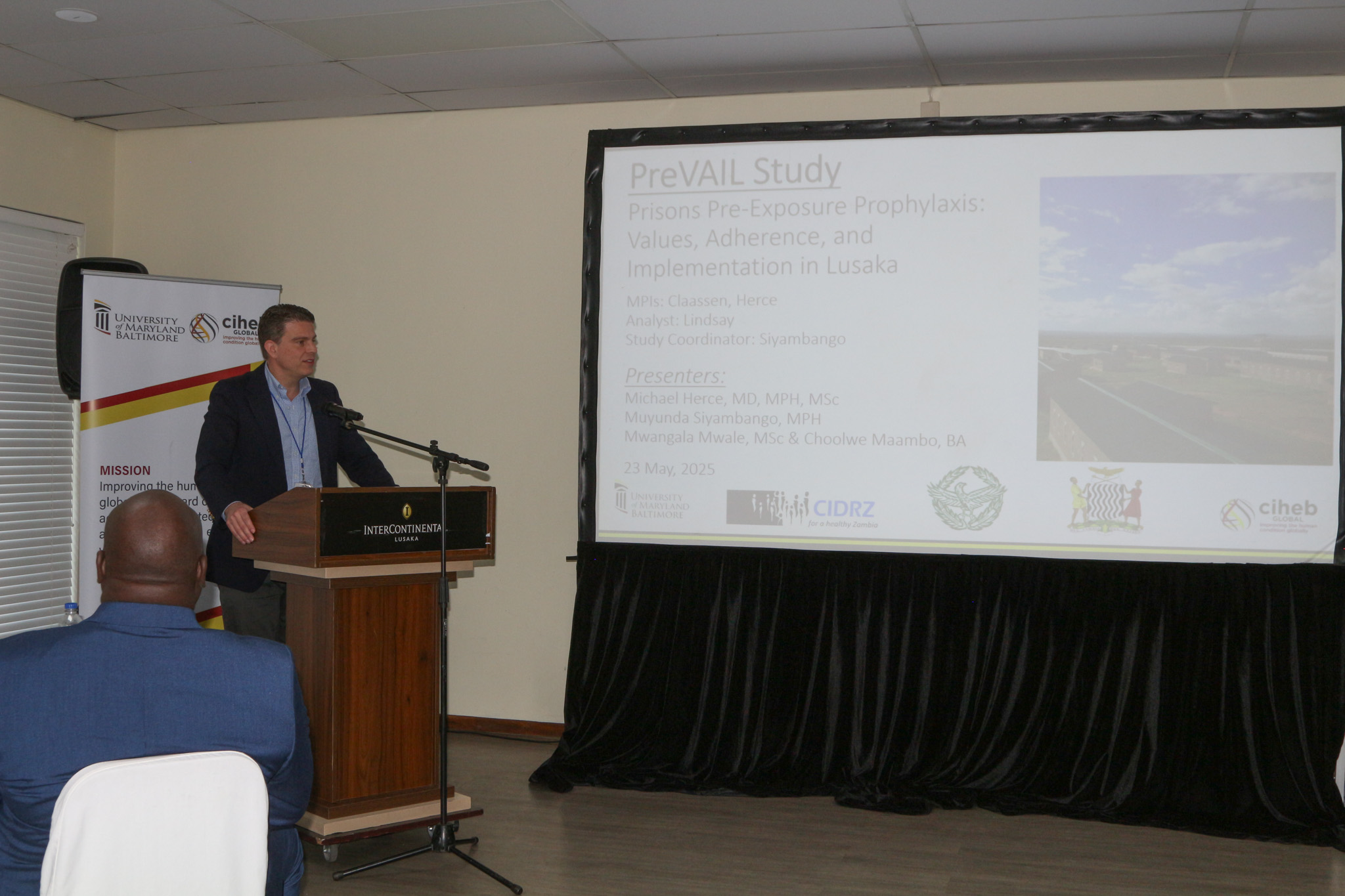
CIDRZ Receives a State-of-the-Art BD Fortessa X20 Flow Cytometer, Bolstering its Immunology Assay Capabilities
May 29, 2025
CIDRZ and MOH Holds Collaborative Planning Meeting to Boost Health outcomes in Chilanga and Kafue districts.
June 3, 2025Clinical Research at CIDRZ: PrEP Implementation in Zambian Correctional Facilities.
Globally and in Zambia, people in correctional facilities and those involved in the criminal justice system are at higher risk of acquiring HIV compared to the general population. Incarceration, as well as the period immediately following release, presents heightened vulnerability, often due to limited access to HIV prevention services.
To address this issue, the Centre for Infectious Disease Research in Zambia (CIDRZ), alongside the University of Maryland, Baltimore and the Centre for International Health, Education and Biosecurity (CIHEB), in partnership with the Ministry of Health and Zambia Correctional Service, conducted a mixed-methods implementation research study entitled, “Prisons Pre-Exposure Prophylaxis: Values, Adherence, and Implementation in Lusaka” or the “PrEVAIL” study.
The PrEVAIL study, conducted from 2023 to 2024 and funded by the National Institute of Mental Health of the United States National Institutes of Health (NIH), focused on understanding and improving the delivery and uptake of Pre-Exposure Prophylaxis (PrEP) for HIV prevention among incarcerated populations in Zambia.
The PrEVAIL study team aimed to assess PrEP uptake, adherence, and persistence during and after incarceration for individuals involved in the criminal justice system (i.e., “justice-involved individuals”), while also exploring HIV risk perception and behavioural factors.
The study enrolled and followed a prospective cohort of justice-involved individuals from four correctional facilities in Lusaka Province over one year, including people who chose to use PrEP and those who initially declined it.
The study also employed qualitative methods, including focus group discussions and in-depth interviews with incarcerated individuals, healthcare providers, and corrections staff to understand the facilitators and barriers to PrEP use.
Results of the study showed that PrEP uptake was high among incarcerated individuals, particularly those who had been sentenced, had previously heard of PrEP, expressed concern about acquiring HIV in prison, or had experienced a prior sexually transmitted infection. However, PrEP persistence, defined as any refill within 180 days of initiation, was low and consistent with findings from studies among other key populations in Zambia.
PrEP adherence, assessed using a novel urine tenofovir point-of-care test, was also low, with only 24% of PrEP users showing detectable levels of the drug. Of the 235 participants who initiated PrEP and had at least one follow-up visit in the community, only 34% (81 individuals) collected at least one PrEP refill. The median time from enrolment to community PrEP collection was 8.5 months.
Notably, the study observed that individuals who initiated PrEP while incarcerated were more likely to collect it post-release, highlighting incarceration as a critical window for initiating HIV prevention services. The study team suggests that incarcerated people who received structured discharge planning were also more likely to continue PrEP after release.
Interestingly, those who perceived themselves to be at lower risk of HIV were more likely to report community PrEP collection, possibly because both community collection and HIV risk perception were assessed at the same time point, and people on PrEP often consider themselves protected against HIV. Conversely, participants who reported being sexually active after release were less likely to collect PrEP, signalling a need for improved counselling in this population to encourage PrEP use if they remain sexually active post-release.
The study reported an HIV incidence rate of 0.4% among cohort members, which is higher than rates reported in population-based surveys of the general population in Zambia. This underscores the ongoing vulnerability of this population and the urgent need for sustained tailored HIV prevention interventions.
While motivation and awareness around PrEP were high among incarcerated individuals, challenges with adherence and continuation post-release suggest the need for differentiated prevention strategies, including long-acting injectable PrEP and improved transitional care services.
This study is among the first globally to evaluate PrEP use among justice-involved individuals systematically. It provides vital insights into how correctional facilities can serve as critical entry points for HIV prevention among high-risk populations and offers a foundation for scaling up PrEP services in similar settings.




